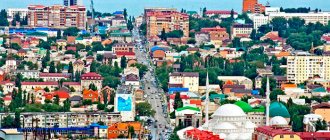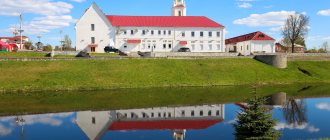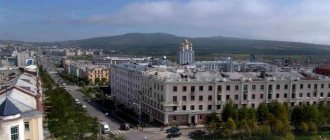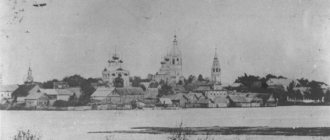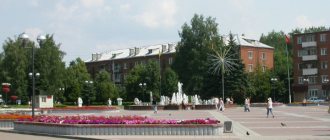The city, located on the shores of the Sea of Okhotsk, was founded in 1929. Land development began at the end of the 19th century, when exploration expeditions discovered gold deposits. Development and mining began after the Civil War, when the city's population consisted of miners and environmentalists.
Everything changed in 1932, when a special decree created the Northeast Correctional Camp. During the period of Stalinist repressions, many political prisoners who served their sentences in Kolyma were exiled to Magadan.
Among them were pop singer Vadim Kozin, writers Pyotr Demanti, Vsevolod Pepelyaev and others. The prisoners built highways, river ports, airfields, Magadan itself and nearby cities in the region.
Now Magadan is a small city developing in the fields of industry and tourism. Travelers can get acquainted with the history of the region in museums and galleries, feel the spirit of Stalin's times at an abandoned mine and visiting memorials, and also stroll along the shore of the Sea of Okhotsk.
For ease of route planning, we have marked all the mentioned attractions on the city map:
Mask of Sorrow
This monument is dedicated to the victims of political repression. The sculpture is made in the best traditions of Cubism and represents a huge face. One eye of the face is represented in the form of prison bars. A tear in the form of theatrical masks flows down from the second eye. If you go around the monument on the other side, in that place you can see the figure of a woman kneeling in prayer in front of the crucifix. This monument is a sad reminder of the events of pre- and post-war reality.
Location: Krutaya Hill.
Day 5. Procurement
I highly recommend the Harvest market - st. Dzerzhinsky, 28 (closed on Mondays).
Approximate prices on the market
Very tasty red caviar - from 3500 rubles per kilogram
Can of crabs - from 1700 rubles
Belly, or tesh (this is fish, if that) - from 1000 rubles per kilogram
Thermal package for transporting purchased wealth - 150 rubles
Adviсe
- The main expense item when traveling to Magadan is air tickets. Of course, you can find flights from Moscow with long layovers in Siberia, but on the way back with a suitcase full of red caviar that might melt, you will regret it.
- Be mentally prepared for the fact that your diet will consist of seafood or venison. You can be a vegetarian here, but it is expensive - vegetables, fruits and milk in Magadan cost incredible amounts of money.
- The Kolyma nature beckons you to go hiking, but it’s better not to venture onto the hills without being accompanied by locals. And yes, there are bears here.
- And one more piece of advice: never, remember, NEVER sing Vasya Oblomov’s imperishable song if you don’t want to be hated. We really don't like it.
Bottom line: approximately how much money to take with you to Magadan
I spent 21,074 rubles on goodies for home, entertainment, a car, gasoline and food.
Mammoth sculpture
The Mammoth sculpture in the city of Magadan has its own special symbolic meaning, which is expressed in its name - “Time”. This is the name of the sculpture by its author, who chose scrap metal from what used to be a bunch of watches as the building material. The entire body of the mammoth is covered with small and large gears and wheels, which used to make up the clock mechanism.
Location: Port Highway.
The most popular places in the city
The cultural component is widely represented in Magadan. Today, not only in this city, but also in other settlements of the region, monuments dedicated to various historical events have been erected. It’s better to start your trip by visiting the most popular places:
- Construction "Time". The monument is in the form of a life-size mammoth figure. The monument appeared recently, but has already become one of the main attractions of the city. The structure is made from scrap metal. Under the influence of precipitation, the metal became corroded and acquired a brown color, reflecting the natural color of the animal’s fur. The mammoth figure reaches a height of almost 4 m, is 6 m long and weighs just under 6 tons. The idea of creating the monument belonged to a local sculptor, in whose thoughts there was a desire to testify to the fact that the imperial mammoth was once found in these parts.
- Nagaevsky lighthouse. The spotlight is considered one of the symbols of the city. The building is located in the vicinity of the picturesque Nagaev Bay. Once upon a time, a lighthouse showed the way to the harbor for ship captains. Now the octagonal tower, at the base of which is a massive quadrangular support, serves as a landmark. The old structure has lost its navigation functions; it is being replaced by another lighthouse installed at the entrance to the bay, from where a good view of the Sea of Okhotsk opens.
- A chapel erected in honor of St. George the Victorious. This architectural object was opened in 1996 at the request of citizens who wanted a monument in honor of WWII soldiers to appear in the city. The chapel is considered one of the iconic landmarks of Magadan. Its opening took place during the celebration of the 51st anniversary of Victory Day. The building has become a cultural and spiritual heritage. People come here to pay tribute to the defenders of the Fatherland and appreciate the beauty of the structure.
- TV station. At the highest point of the city is the Magadan TV tower. The construction of the structure took place in 1957. The height of the iron structure is quite a bit higher than a five-story building. Such an elevation allows for continuous and high-quality transmission of the signal to every district of the city. At night, the structure is illuminated and looks very beautiful, reminiscent of the Eiffel Tower.
Holy Trinity Cathedral
The Holy Trinity Cathedral, which was built in 2008, is the newest, and at the same time the largest Orthodox church in the city. Like the Mask of Sorrow, this cathedral was erected in memory of the victims of political repression before and after the war. The huge white building with five gilded domes creates a striking contrast with the surrounding residential buildings.
Location: Cathedral Square - 1.
Nagaeva Bay
Since ancient times, Nagaev Bay has established itself as an excellent place for ships to shelter in the Sea of Okhotsk. It is a strip of sea that cuts deeply into the coastline, thus forming a corner protected on three sides by land, and only on one side open to the sea.
Today the bay is a stopping place for numerous fishing, cargo and passenger ships.
Chapter 7. Climatic characteristics of the seasons of Magadan
Magadan is located in an area with unfavorable climatic conditions, characterized by long winters and short, cold summers. This climate is formed both under the influence of the location in the northern latitudes and under the influence of the cold Sea of Okhotsk. Due to the severity of the climate, the length of the seasons differs significantly from the generally accepted ones.
Winter. The beginning of winter is the date of stable transition of the average daily air temperature through 0°C towards negative values, and the end of winter is the date of transition of the average daily temperature through 0°C towards positive values. In Magadan, the average duration of the period with a negative average daily air temperature is on average 7 months (from October 11 to May 9). In the most unfavorable years, the duration of this period can be 8 days longer, the shortest duration is 6 months 12 days. A stable adjacent cover is formed in the third ten days of October. It should be noted that in terms of the time of restructuring of atmospheric processes, October and April in coastal areas belong to the autumn and spring seasons, respectively.
According to the phenological calendar, winter begins with the complete exposure of larch.
The features of the winter season are most clearly expressed in December, January and February, and the beginning and end of winter bear the features of adjacent seasons.
Thus, in Magadan, the winter period is considered to be a period of 5 months (November-March).
In November, there is a significant decrease in air temperature compared to the previous month. From November to January, the average monthly air temperature decreases; in February and March it increases slightly. The winter period is characterized by unstable weather, with significant fluctuations in air temperature. In winter, deviations of the average monthly temperature from the norm are greatest and average 2.5...2.8 °C. In some years, the average monthly air temperature in winter may differ by 13...14 °C; deviations of the average monthly temperature from the long-term average are 2.8...3.7 °C. In cold winters, severe frosts are often replaced by warming temperatures, often turning into thaws. Only part of the winters in Magadan are without thaws. Thaws, as a rule, do not last long; positive temperatures often last less than a day. More intense and prolonged warming may occur at the beginning of winter. Thus, in November 1955, for 4 days the air temperature did not drop below 0 °C; on November 1, it increased to 5 °C. In December 1955, positive temperatures persisted throughout the day; on December 20, the maximum temperature was 2.8 °C; rain was observed on December 19 and 20. In some winters there are up to 13 days of thaws.
An increase in temperature to a thaw in the middle of winter occurs when active cyclonic eddies forming in the Sea of Okhotsk emerge; they bring not only warm air, but also heavy snowfalls and stormy winds.
Winter is the windiest season. The average wind speed for the season is 6.7 m/s; in the windiest winters it is 2.1 m/s more, and in calm winters it is 2.2 m/s less than the long-term average. December has the highest number of days with strong winds in the winter (5.9 days). The maximum wind speed is 40 m/s, it is observed in January; in November and December, the maximum speed also reaches high values - 34 m/s. By the end of winter, the frequency of stormy weather decreases significantly. So, if in December the average number of days with a snowstorm is about 11, then in February - 7, in March - 6.
A characteristic feature of the winter season in coastal areas is the slight frequency of calm weather even at low air temperatures. In Magadan, at temperatures below -20 °C, the wind speed is 4-10 m/s, and on some days exceeds 15 m/s. Windy weather with low temperatures usually occurs when deep cyclones pass some distance from the northern coast of the Sea of Okhotsk. In such cases, the transfer of warm air to this area, as a rule, does not occur; sometimes slight warming can be observed; at the same time, the coast falls into a zone of large pressure gradients, which leads to increased wind
Winter in Magadan has little snow, and part of the annual precipitation falls during the cold period. The amount of precipitation gradually decreases during the winter, and the highest amount usually occurs in November. In the snowiest winters of 1955-56 and 1966-67, the amount of precipitation was about 260 mm, i.e. more than half the annual norm. Along with this, there are winters when there is very little precipitation. Thus, two winters in a row (1943-44 and 1944-45) were practically without snow - the amount of precipitation was only 14 mm. In addition, the winter of 1943-44 was windy and frosty; the average temperature of all winter months was below normal. Long periods with temperatures below -20 °C and wind speeds of 4-6 m/s were repeated quite often. At the end of January, when the air temperature was -20 °C and below, the wind speed reached 6-10 m/s, and on some days - 14-18 m/s. In January, this weather persisted for a particularly long time (almost the entire month).
It should be noted that the severe winter of 1943-44 replaced the warmest winter of 1942-43 in the entire 40-year period of observations in Magadan.
When assessing the winter season and the thermal regime, the winter of 1965-66 turned out to be the coldest: from November to February, the average monthly air temperature was 4...7°C below normal.
The absolute maximum air temperature was above -10 °C only in November and March, and in December - February the temperature never exceeded this limit. For two months (January, February) without breaks, the average daily temperature was below -20 °C, 1 minimum temperature dropped to -32.6 °C. During the winter, calm weather prevailed, the wind speed was 1.7-2.8 m/s less than normal. The amount of precipitation from November to February was 45.3 mm. In March it became warmer, the frequency of strong winds, blizzards and snowfalls increased. But the relatively warm March could not compensate for the low temperatures of the remaining winter months.
The average temperature of the warmest winter of 1942-43 was -9.4 °C, which is 2 times higher than the temperature of the coldest winter. During all winter months, excluding February, the air temperature was 5...7 °C above normal. In November and March, the maximum temperature was positive, in other winter months - above -2 °C. The average wind speed, especially in the first half of the season, exceeded the norm by more than 2 m/s. Strong winds were accompanied by blizzards; for three months (from November to January) blizzards were observed most of the time and their duration turned out to be much longer than in the coldest winter. The characteristics of the coldest and warmest winters are given in Table. 63.
In winter, the amount of cloudiness is less than in other seasons. The number of clear days based on total cloudiness ranges from 5 to 8.5. Low-level clouds cover the sky much less frequently in winter. In November, low-level cloudiness is absent on average for 13.2 days, and in March for 21.4 days.
Spring.
Spring usually begins with the melting and gradual removal of snow cover, and an increase in the average daily air temperature to 0 °C. The first spring phenomenon in the plant world—sap flow in white birches—occurs on May 8th. Between 9 and 11 May the first larks and white wagtails arrive. In the floodplain of the river. Magadanka On May 15, the first plant blooms - squat cotton grass. But spring processes, caused by the restructuring of pressure fields, occur much earlier, so April is considered the first spring month in Magadan. However, according to its thermal characteristics, it can be classified as a transition month - the average air temperature in April is still negative. In some years, even in May, negative temperatures remain for most of the month, and the absolute maximum does not exceed 8.8 °C. Sometimes there are exceptions. Thus, in 1944, at the end of May, the temperature rose to 22.3 °C. In April, only on some days the air temperature is above 0 °C (from 1 to 10 days). The average date for the average daily temperature to cross O °C is May 9. However, in a cold, protracted spring, such a transition occurs much later at the end of May. In early spring, the transition of air temperature above 0 °C is observed on April 27. In April the prevailing air temperature is -6... -2 °C, in May -2...2°C. The duration of the period with an average daily air temperature of 0..10°C ranges from 36 to 80 days (May-June). In spring, the variability of average daily temperature decreases significantly compared to winter. Thus, in April over a 10-year period, the greatest daily variability was 6.2 °C, and in May it decreased to 5.3 °C.
The frequency of strong winds decreases in spring, but the average continuous duration of strong winds (≥ 12 m/s) in May is only slightly less than in the winter season. The wind of the westerly component becomes predominant, but its speed is significantly less than the east and northeast. The average long-term wind speed for the season is 5.0 m/s. The windiest spring was 1945, the average wind speed was 6.4 m/s, and the calmest was the spring of 1935—the average wind speed was 2 times less than the long-term average.
In spring, precipitation falls 3 times more than in February and March. In May, the average duration of precipitation is 106 hours, and in some years the total duration of precipitation reaches 244 hours, i.e. 10 days. In April, precipitation falls mainly in the form of snow, while in May both solid and liquid precipitation are equally likely. In some years, snowfall is observed even in June (June 9, 1952). The first rainfall may occur at the end of April. In some years, the first rain occurs only in early June.
In April and May, cloudiness increases significantly. The first advective fogs appear in April. In May, the frequency of fogs increases. Thus, in May 1964 there were 19 days of fog. Advective fogs are usually accompanied by strong winds at fairly low air temperatures, which creates a feeling of damp, dank weather.
The predominance of mixed precipitation and fog in May, combined with air temperatures close to 0 °C, creates favorable conditions for the formation of ice, deposition of wet snow and other ice-frost phenomena. The most intense of them are typical for May.
May is a month of contrasts and extremely unstable weather. In May there are snowfalls and blizzards, sleet and rain, ice and fog, and even thunderstorms.
Thunderstorms in May are very rare. In the last days of May 1944, two thunderstorms were observed.
Based on the sum of temperatures in April and May, the warmest spring was in 1943 (∑t = -18.6 °C), and the coldest in 1950 (sum of temperatures ∑t = -242.3 °C). In both cases, the thermal regime in April turned out to be decisive. Although the transition of the average daily temperature through 0 °C in 1943 occurred only 2 days earlier than the long-term average date, but due to the fact that the average temperature in April was 2.4 °C and in May 1.3 °C higher than normal, In total, these two months were the warmest in 40 years. In April, the temperature increased to 6.5 °C and for 12 days the daytime temperature was above O °C. During the first half of the month the weather was clear. In May, only for 5 days the average daily temperature was below 0 °C, and the maximum temperature reached 14.3 °C. The last snow fell on May 8, the first rain was recorded on May 7. Thus, the warmest winter of 1942-43 gave way to a warm spring.
In the cold spring of 1950, the transition of the average daily air temperature through 0 °C was observed late - on May 21. As a result, the sum of temperatures for the month turned out to be negative. The same sum of temperatures (-21.7 °C) in May was noted twice over a 40-year period, and in general a negative sum of temperatures in May was observed 4 times over the entire observation period, but in all these cases April was warmer than in 1950 April 1950 was unusually frosty and more like a winter month. For 11 days, the average daily temperature was below -10 °C, and the absolute minimum was -23.5 °C (this is the lowest temperature in April for the entire observation period). Only 2 times in a month the daytime temperature crossed 0 °C, without even reaching 1 °C. The weather was clear for most of the month, the average monthly wind speed was 3.9 m/s (the norm was 4.4 m/s), precipitation fell only 3.6 mm, i.e. 18 mm less than the norm; It snowed until May 29th. In May, 20.4 mm of precipitation fell; The wind speed for the month was 4.2 m/s, strong wind was observed 2 times, and there were 10 days with fog.
Some characteristics of the warmest and coldest spring are given in Table. 64.
Summer. In the coastal areas of the northern part of the Sea of Okhotsk, the summer period is considered to be 3 months - June, July and August. The beginning of summer usually coincides with the appearance of needles 3-4 mm long on larches. In June, wild rosemary blooms on the hills around the city. However, June should be considered a transition month; The main features of the summer season are July and August, which differ little from each other in their thermal regime.
During the summer, the air temperature, as a rule, exceeds 5 °C, the average date of temperature transition through 5 °C is June 7, the average monthly temperature above 10 °C is established in July and August. The prevailing temperature in June is 4..8 °C, in July 8..12 °C, in August 10..14 °C. In more than 50% of years, in the first ten days of June, the air temperature drops to negative values, i.e. frosts are observed. Although in July and the first two decades of August the air temperature does not drop to 0 °C, severe cold snaps are not uncommon during this period. They occur during an intense invasion of cold Arctic masses, when a stable north wind sets up in the atmosphere in the rear of cyclones stationary over the eastern regions of Chukotka and the Bering Sea.
Summer is characterized by frequent breezes and rains, their frequency increases compared to the spring period. Although rare, there are still nice warm days. The warmest weather sets in after cyclones pass through the Sea of Okhotsk in the immediate vicinity of the northern coast, in the rear of which northern winds blow, bringing warm air from the continent. On such days the air temperature exceeds 20 °C. Every year in summer there are from 1 to 9 days with maximum temperatures above 20 °C.
In summer the wind weakens significantly. The average wind speed does not exceed 4.2–4.3 m/s. In the daily cycle, the minimum speed is observed at night and morning hours, the maximum - around midday. In August, strong winds (≥15 m/s) are observed annually, and in June and July - 7 and 4 times in 10 years, respectively. In summer, the maximum wind speed decreases compared to the winter and spring seasons. The average continuous duration of wind speeds greater than 12 m/s is small and amounts to 2-4 hours per month, the maximum duration is 12-13 hours.
In the summer months, the amount of precipitation increases almost twice as much as in the spring. On average, the duration of rain in the summer months is approximately the same and amounts to 130-150 hours per month, and in some years 220-250 hours, i.e. 1/3 of the month. In summer, the amount of precipitation in one day can exceed the monthly norm. Summer precipitation can be either continuous or torrential. The rainiest season was the summer season of 1938, when the amount of precipitation was 311 mm of precipitation, which is almost 2 times more than the long-term average; The summer of 1975 was also characterized by significant precipitation. Of all the summer months, August is the rainiest. In some years, the summer is dry, with only 60–80 mm of precipitation falling (1947, 1948, 1963), i.e., 2–3 times less than the long-term average amount.
In summer, fog and haze are often observed in Magadan. On average, there are 15-16 days with fog per month. The maximum number of days with fog was recorded in August - 27.
Thunderstorms do not occur every summer, but in some years there were 3 thunderstorms in July and August. Thunderstorms in Magadan are short and weak and usually do not cause negative consequences.
The summer season is characterized by high air moisture content and the predominance of cloudy weather. Relative air humidity in the summer months exceeds 80%. At night, there is an increase in humidity to 80-92%, during the day - a decrease to 77-78%. Every year in the summer for 12-13 days, the relative humidity at 1 pm exceeded 80%; the number of days with relative humidity of 50% or less is 1 - 3. There are approximately the same number of cloudless days during this period. The number of days with low cloudiness of 7-10 points is 10-11, the number of days with total cloudiness is 17-19; 6-7 days per month are observed with the absence of lower clouds.
The warmest summer was 1962—the average monthly air temperature was 1.1° C above normal. July 1962 was the warmest for the entire observation period. In 1962, the transition of the average daily temperature through 10 °C was observed on June 30, i.e., 6 days earlier than the long-term average date. In July 1962, the average daily temperature was below 10 °C on one day, and for 8 days it exceeded 15 °C. Over the entire 40-year observation period, the maximum air temperature was observed in August 1962 and amounted to 25.5 °C.
The wind speed in the summer of 1962 did not exceed 9–10 m/s; the maximum wind speed was observed in August—12 m/s.
The warmest summer was quite dry. In the summer months, precipitation fell below normal; August was especially dry (the total precipitation was 18 mm). According to long-term data, such a dry August occurs approximately once every 10 years. In total, 80 mm of precipitation fell over the summer, which is less than half the average.
The number of days with fog during the summer months of 1962 was approximately the same and did not differ significantly from the long-term average.
The coldest summer was in 1966. The average daily temperature above 1-0 °C was observed from July 15 to August 26 (41 days), i.e., the duration of the period with temperatures above 10 °C was 13 days less than the long-term average and by 20 days less than in the warmest summer. In June 1966, the air temperature dropped below 0 °C 4 times, the highest temperature did not exceed 16.1 °C, the maximum temperature in July was 17.7 °C. The daily maximum air temperature in June 1966 was the lowest 12 times during the 10-year observation period. In August, daytime temperatures ranged from 9.4 to 22 °C, but the prevailing temperature was around 13 °C. Over the entire season, the air temperature was 1.6 °C below normal.
The amount of precipitation over the summer was 191 mm, which was slightly higher than normal. July and August were rainy, June was dry. The average wind speed did not differ significantly from the long-term average. Fogs were observed in the city for more than half of the summer season.
The most important characteristics of the warmest and coldest summers are given in table. 65.
Despite the predominance of rainy, cool weather, summer is an important period in the economic life of the city. In summer, construction, installation and repair work intensify. This is the period of planting trees and shrubs in the city, the time of haymaking, which begins in July and continues until late autumn, planting and growing potatoes, carrots, dill, radishes, turnips and other vegetables in suburban farms. In July, mushrooms appear in the outskirts of the city; blueberries and cloudberries ripen in August. Suburban hills attract a lot of city dwellers for active recreation and picking berries and mushrooms.
Autumn.
In Magadan, the autumn season includes two months - September and October. According to climatic conditions, September gravitates more towards the summer season, and the second half of October - towards the winter season. But according to the phenological calendar and the development of atmospheric processes, September and October (the first two decades) can be classified as the autumn period. Nature celebrates the autumn season by yellowing leaves and needles on the trees. The leaves of white birch turn yellow first (August 28), then the needles of Dahurian larch (September 8), the complete yellowing of the green plumage of trees and shrubs occurs by September 15. The first frosts in the air are observed already in August; in September their frequency, as a rule, increases (up to 6 times a month). In some years, there are no frosts in September.
If in July and August the average monthly air temperature is approximately the same, then in September and October it drops by 5...6 °C; in October the average monthly temperature becomes negative. In September the temperature is predominantly 6...10 °C, in October -2...2 °C. In some years, daytime air temperatures can reach 20 °C in September and 13.8 °C in October. Warm, quiet and sunny weather sets in for several days.
Sometimes in September (especially at night) the temperature can drop to -6.3 °C, and in October - to -21.6 °C. The average date for the decrease in average daily temperature to 0 °C and below is October 11 and approximately coincides with the complete cessation of plant growth. In October, on average, the air temperature remains below -10 °C for 13 hours.
In the second half of September, snow may fall, which in some years even forms a snow cover, which, as a rule, lies for only a few days and then melts. The earliest date for the appearance of snow cover is September 15, the latest is October 18. September often sees rain, and October often sees snow. In autumn, precipitation averages 149 mm, i.e. slightly more than
in July and August. The maximum daily precipitation was observed in October 1973 and amounted to 98 mm.
In autumn, the wind increases and the frequency of stormy weather increases. A characteristic feature of the wind regime is that the southern wind, which is not typical for Magadan, intensifies in the autumn, the average wind speed is 6.4 m/s, the maximum is 20 m/s.
In September, snowstorms and such a rare phenomenon for Magadan as hail are possible. In September, there are cases of wet snow deposits on power lines and vertical surfaces. In October, when the temperature drops to 0 °C and below, the likelihood of ice and frost deposits increases.
In autumn the amount of cloudiness decreases; The frequency of fogs also decreases, especially in October. In October, there is no low-level cloudiness for almost half a month.
The number of days with fogs is reduced to 5. Air humidity is noticeably reduced: absolute - by about 4 times, relative - by almost 20%. In autumn, more often than in other seasons, relative humidity does not exceed 30%. The warmest autumn was 1944, the sum of positive temperatures for the season was 248 °C, and in September - 279 °C.
Over the entire observation period, the warmest month was September 1944. The average daily air temperature until September 18 exceeded 10 °C, the average long-term date of temperature transition through L0 °C was August 30. The decrease in the average daily temperature below 0 °C occurred on October 9, i.e., the date of the temperature transition through 0 °C almost coincides with the long-term average.
The autumn of 1944 was not only warm, but also humid - the total precipitation for the season was 277 mm, i.e. almost twice the norm. Over the entire observation period, there were six autumn seasons (15%) with precipitation greater than 200 mm.
In September (23 days) and October (11 days), the relative humidity at 13:00 was more than 80%. The number of days with strong wind was 12. The average wind speed for the season was slightly higher than the long-term average. The coldest autumn occurred in 1960, when the coldest September gave way to a rather cold October. The sum of temperatures for the season was -0.8 °C. And although the dates of temperature transition through 0 and 10 °C did not differ too much from the long-term averages, starting from September 15, the temperature was negative almost every day at night, and on September 17, the average daily air temperature also became negative. Frosts on the soil were observed from the first days of the month, and in the third decade the temperature of the top layer of soil dropped to -5... -7 °C. The first snow fell on September 14, a snowstorm was observed on September 16, a snow cover formed, which persisted for 6 days; The depth of snow cover on September 19 was 19 cm; towards the end of the month the snow gradually melted; stable snow cover established on October 12. Precipitation in the autumn of 1960 was more than normal - 168 mm (norm 149 mm). There were three days with strong winds in September; The wind speed in October did not exceed 10 m/s. The number of days with rain was 17, solid precipitation was observed 27 times. Cloudy weather lasted for half of September and the third part of October.
The characteristics of the warmest and coldest autumns are given in Table. 66.
Autumn is no less busy than summer, a time in the life of the city. This is a period of massive supply of vegetables and other food products, for which both low temperatures and heavy rains pose a great danger. This is the time of harvesting in suburban farms, the period of preparing the city for the long winter season. Therefore, it is very important what weather conditions develop during this period. The most favorable is to maintain not only warm, but also dry weather. If we consider autumn to be dry, when no more than half of the norm (75 mm) of precipitation falls during the season, which does not happen so rarely, then almost every 4th year (21.4%) will be favorable. One and a half times the norm (225 mm) or more precipitation falls in 14% of years, i.e. approximately once every 6 years. From normal to 1.5 times normal precipitation occurs in 40.5% of years, i.e., rainy autumn seasons are less common than dry ones or seasons with normal moisture.
Magadan Regional Museum of Local Lore
The Magadan Regional Museum of Local Lore is exactly the place that is worth visiting for anyone interested in the history of the region in general, and the period of Stalinist repressions in particular.
It contains various paleontological and ethnographic finds found by local historians, as well as documentary exhibits reminiscent of the era of political repression. Also, since there were many representatives of culture and art among the prisoners of that period, the local history museum contains entire exhibitions of their works.
Location: Karl Marx Avenue - 55.
Historical sites and museums
Magadan Regional Museum of Local Lore
Address: Karl Marx Ave., 55 Telephone: 8 (4132) 605-859 Website: https://www.magadanmuseum.ru Opening hours: 10:00 – 18:00 daily Cost: 50-100 rubles.
The opening of the museum took place on March 30, 1934 and was timed to coincide with the First Congress of Kolyma Collective Farmers.
At the time of launch, the exhibition presented the ethnography of the northern peoples - historical materials, exclusive exhibits on the history of Kolyma. Since 1946, the museum began to be replenished with collections of northern archaeologists.
Currently there is an exhibition “Kolyma - Sevvostlag”, dedicated to the history of repressions.
Memorial Museum-Apartment of V. A. Kozin
Address: per. Shkolny, 1 Phone: 8 (413) 629-205 Website: museum.mag.muzkult.ru Opening hours: 11:00-19:30 Wed, Thu, Fri; 12:00-19:00 Sat, Sun; Mon, Tue – closed Cost: free
The museum was founded in 1995 in the apartment - music salon of Vadim Kozin, where he worked and lived. Within these walls, the pop singer, convicted and exiled to Magadan, has performed for guests since 1991.
The salon contains authentic materials from Kozin’s life:
- documentation,
- photos,
- fan letters,
- household items and much more.
Municipal Museum of History and Culture of Magadan
Address: Karl Marx Ave., 35 Telephone: 8 (4132) 222-984 Opening hours: 10:00-22:00 Tue-Sat; Sun, Mon — closed Cost: 50 rub.
The museum is the oldest in the Russian Far North. The largest part of the exhibitions is devoted to the history of the region and the times of repression.
Among the exhibits are documents, photographs and objects brought from the Gulag.
At the center of the exhibition is a restored observation tower from the Kolyma camp.
Gallery of Contemporary Art
Address: st. Pushkina, 8 Telephone: 8 (4132) 624-262 Opening hours: 12:00-18:00 Tue-Fri; 12:00-15:00 Sat; Sun, Mon – closed Cost: free
The Gallery of Contemporary Art of the Magadan branch of the Union of Artists of Russia was opened in 2003.
The halls host personal and collective exhibitions of artists. Sculptors, graphic artists, painters and other masters from the northern region exhibit their works here: Vladimir Myagkov, Alexander Myagkov, Pavel Zhdanov and others.
In the gallery you can purchase your favorite work, as well as choose a baguette to match the paintings.
Natural History Museum
Address: st. Portovaya, 16 Phone: 8 (4132) 630-934 Opening hours: 10:00-18:00 Tue-Sun, Mon – closed Cost of a personal or group excursion: 1000 rubles.
The museum was founded in 1977. Initially it was called geological and mineralogical, since the exhibits included stones and minerals from private collections of employees of the North-Eastern Research Institute of the Far Eastern Branch of the Russian Academy of Sciences.
In 2002, the museum was replenished with an exhibition presenting ethnographic and archaeological materials:
- bones,
- ceramic fragments,
- stone figurines,
- household items of ancient people of the northern region.
The Museum of Natural History of Magadan is the scientific division of the institute.
Geological Museum
Address: st. Proletarskaya, 11 Phone: 8 (4132) 624-769 Website: https://www.mfgi.ru Opening hours: 8:30-12:00 and 14:00-18:00 Mon-Thu; 8:30-11:00 Fri; Sat, Sun – closed
The regional museum was founded in 1939 on the initiative of famous Russian geologists: Viktor Matvienko, Alexey Vaskovsky, Anatoly Boldyrev and others.
Here you can find information about minerals and the geological structure of the northern lands - Magadan and Chukotka. In addition to the exhibition with minerals, the museum houses the “Golden Room”, in which precious nuggets from the deposits of the region are exhibited.
Visiting the museum is only possible by appointment.
Monument to Vladimir Vysotsky
Many admirers of the work of Vladimir Vysotsky come to Magadan to follow his paths here. Back in 1968, the poet and composer came to Magadan and dedicated more than one of his songs to this city. Thus, in the song “I’ll go to Magadan,” the bard recalls the aforementioned Nagaev Bay. Actually, it is there, on the observation deck of this bay, that you can see the monument to Vladimir Vysotsky.
Day 3. Beach and nature
Rent a car for a couple of days
Just don't be alarmed by gas prices. In Magadan, fuel is quite expensive - about 5-8 rubles more expensive than in Moscow.
from 1300 rubles per day
Go fishing
I do not recommend traveling unaccompanied. To get there you need, firstly, to have perfect control of the car, and secondly, not to look down. But you will pass a small waterfall. It's cold and windy on the pier; a winter jacket wouldn't hurt in summer either. Even if you are catastrophically unlucky with fish, you can always pretend that you were not going after it, but after kelp. These algae, after proper processing, are quite edible.
Depends on how you prepare
Far pier in Nagaev Bay
Relax on the beach
For free
Recreation area "Gornyak" - st. Sanatornaya, 6.
In winter, fishing changes well to ice fishing, and the beaches change to Snegorka, a ski resort on the Armanskaya piste.
See the Three Brothers rocks
For free
Located on the side of Vesyolaya Bay
Find an escort and climb the Marchekanskaya hill
The price depends on your communication skills
Staritsky Peninsula
Monument to the founders of the city of Magadan
The monument to the founders of the city of Magadan is a structure made of marble. The monument is located on the shore of the already mentioned Nagaev Bay. It was from the place where the monument is now erected that the construction of the city began back in 1929.
The monument depicts sculptures of people of various professions who had a hand in the founding of today's Magadan. Also, on the monument you can see an image of a map of the northern part of the Russian Federation.
Historical reference
The Magadan region belongs to a region of Russia where a harsh climate prevails, so the territory has been developed much longer than others. The emergence of a workers' settlement in 1929 was associated with the need to increase industrial production in the country.
Gold mining enterprises were built in the Kolyma expanses. It was here that the North-Eastern labor correctional camp Sevvostlag was located, where victims of repression worked.
Determining the coordinates of Magadan, we can say that this is the extreme northern point of Russia . The distance between the city and the capital of the country is 5910 km in a straight line only. Magadan is the administrative center and the largest seaport located on the shores of the Sea of Okhotsk.
Memorial Museum-Apartment of V.A. Kozin
Among the people who inhabited Magadan in the past and present there are not many outstanding personalities. Therefore, the popular performer, composer and poet, who lived and died in Magadan, received special attention from residents and city authorities.
Here is his memorial museum-apartment, and next to the house there is a memorial. The memorial features a sculpture of Kozin. According to the architect's idea, the singer sits on a bench next to a residential building and holds a kitten in his arms.
Location: Shkolny Lane - 1, apt. 10.
Attractions in the surrounding area
Dneprovsky mine
Coordinates: 61.2351, 151.4730 How to get there: from Magadan along the P-504 highway, before reaching the village of Myakit; travel time 4 hours, distance 320 km
The Dneprovsky mine, or Berlag, is one of the former Stalinist camps in Kolyma, and was studied by geologists back in the 20s of the last century.
Large deposits of gold and tin were discovered here. Political prisoners repressed in Kolyma lived in special settlements around the deposit and mined ore.
Among them, writers Pyotr Demanti and Vsevolod Pepelyaev served their sentences here.
The camp was closed in 1953, but is well preserved to this day.
Here you can visit production buildings and ore processing equipment, stroll along the stream and see the old cemetery with unmarked graves and wooden crosses.
Jack London Lake
Coordinates: 62.0449, 149.3143 How to get there: from Magadan along the P-504 highway to the village of Yagodnoye; travel time 11 hours, distance 560 km
Jack London Lake is located in the Magadan region in the upper reaches of the Kolyma River.
Geologist Pyotr Skornyakov, who explored the local lands in 1932, named the lake in honor of the writer. According to one version, nature and landscapes reminded the researcher of the novels of Jack London.
The reservoir is surrounded on all sides by taiga and mountains. The place is rich in vegetation and small bodies of water - lakes Mechta, Gray Chaika, Nevidimka, etc.
The area is part of the natural park of the same name.
Magadan Nature Reserve
Coordinates: 59.3831, 147.2655 How to get there: from Magadan to the village of Talon along highway 44N-1; travel time 2.5 hours, distance 150 km
The reserve was founded in 1982 and serves as the protection of the North Okhotsk mountain landscapes and ecosystems of the Sea of Okhotsk. The area is 883,000 hectares and includes several rivers, the largest of which are Yama, Burgali, Antara, Khinja.
Most of the reserve is covered with larch forests, home to bears, foxes, wolves, reindeer and smaller fauna - chipmunks, stoats and sables.
In the marine part of the reserve you can meet dolphins, northern whales and seals.
Exciting water routes are being developed for tourists: a trip to a rookery of marine animals, to coastal cliffs and walking.
Park of Culture and Recreation
The current city park in Magadan is the remnant of a dense forest on the territory of which Magadan was once founded. Local authorities gave an order: not to destroy the green corner, but to build a center in its place where citizens can spend their leisure time.
The park was equipped with a children's playground, several sports grounds for different sports, a stadium and a stage for holding various types of events. Subsequently, the park continued to be developed and improved. However, its real value to this day is the trees that were once a dense forest.
Location: Lenin street - 21.
Shores and embankments of Magadan
In good weather, head to the waterfront. If you live far from the sea and are used to seeing it mainly at beach resorts, the presence of a nice embankment and a real sea in a place like Magadan will make you want to hang out near the shore for a long time.
Departure to the Magadan embankment
On the embankment of Magadan
True, there is no escape from historical memory here either. On the embankment there is a monument to the founders of the city, and the very pier where the ships with the first prisoners moored goes into the water.
Monument to the founders of Magadan
Pier in Magadan
From the embankment you can also clearly see what many residents of Magadan are doing - crab fishing.
Crab catchers in Magadan Bay
There are different rules about how to catch crabs and which ones to release. Whether they are observed is known only to those sitting in the boats.
Crabs on the Magadan market
Memorial to fallen aviators
A memorial to the fallen aviators was erected on the city embankment. This is practically an open-air museum, which featured several planes, tanks and other military equipment displayed simply in the middle of the sky. Children especially enjoyed walking near the memorial. However, due to the flood, which was caused by the overflow of the banks of the Magadanka River in 2014, the memorial was partially destroyed.
